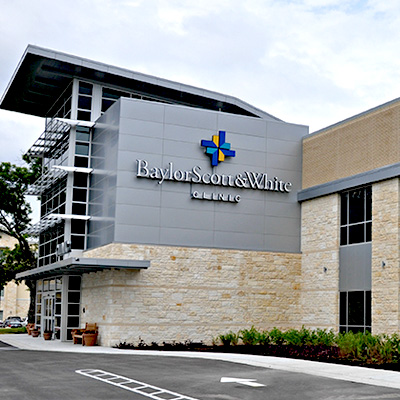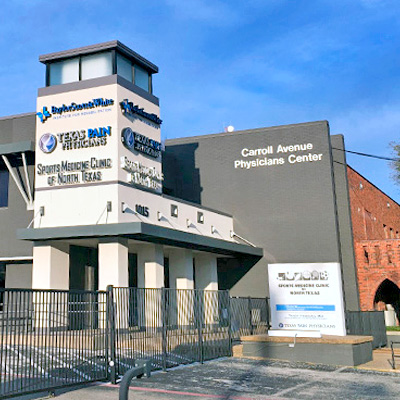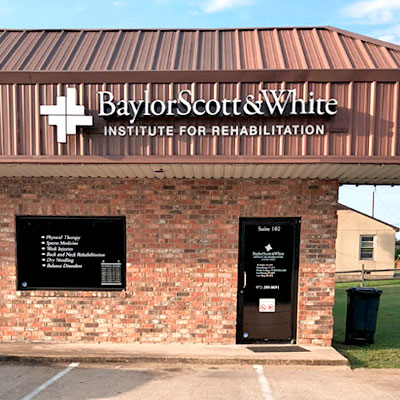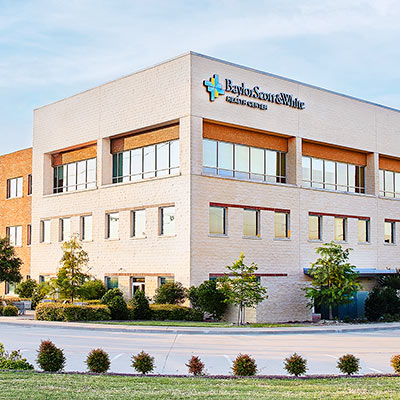What is osteoarthritis?
Osteoarthritis (OA or osteoarthrosis) is the most common form of arthritis and affects over 32 million adults in the US. It can develop in any joint but often affects the hands, feet, hips, knees, lower back and neck.
Osteoarthritis is a degenerative condition, which means it gradually gets worse over time. It is usually caused by wear and tear, but can also occur if the joint is injured. Although there is currently no cure for osteoarthritis, its symptoms can be managed by treatments, medications and lifestyle changes.
Osteoarthritis symptoms
Osteoarthritis symptoms can vary from person to person, but most people experience discomfort, swelling and stiffness in the affected joint. These symptoms usually get worse slowly over time, rather than happening suddenly. Other common symptoms include:
- A dull ache that develops over time
- A joint that appears abnormally large or has changed shape
- A joint that feels loose or unstable
- Crepitus (a grinding, clicking or popping in the joint)
- Joint tenderness or swelling
- Pain that develops after intense activity and movement
- Reduced range of motion that improves with use
- Stiffness or pain early in the morning or after you’ve been inactive
- Weakness in the muscles around your joint, which usually develops the less you move
When to see a doctor
Talk to an orthopedic specialist if joint pain, stiffness and swelling interfere with your daily activities and do not go away with over-the-counter medications. Left untreated, arthritis can reduce your desire to be active, which can lead to weight gain and other chronic conditions, including diabetes and heart disease. Although there is no cure, your doctor can recommend many treatments to help you manage symptoms and regain your active life.
Living in discomfort?
Take our knee, hip or back assessment to see if it’s time to see a specialist.
What causes osteoarthritis?
Osteoarthritis used to be called wear-and-tear arthritis because it was thought that age-related wear caused the tissues to break down. However, researchers are learning that the causes are more complex.
A few different factors cause osteoarthritis. Stress and joint mechanics, sometimes combined with injuries or other conditions, cause inflammation that leads to gradual destruction of the cartilage, tendons, ligaments and synovium (a membrane that lines your joints).
As these tissues wear down, thickening occurs at the bone ends, bony growths known as bone spurs can develop, and the once-smooth surface that allowed your joint to move easily becomes rough. Bone and cartilage fragments may float within the joint space, and fluid-filled cysts can form in the bone. Over time, you have a harder time moving your joints.
Osteoarthritis risk factors
Anyone can develop osteoarthritis, but certain factors can increase your risk. Being aware of these risk factors can help you make lifestyle choices that may reduce your chances of developing osteoarthritis.
Risk factors include:
Age
The risk increases as you get older, especially after age 50.
Excess weight
Being overweight or obese places stress on weight-bearing joints, such as the hips, knees and spine, which can speed up the destruction of joint cartilage.
Family history
A family history of osteoarthritis may make you more likely to develop it.
Joint abnormalities
People with conditions that cause joints to not form or align correctly, such as hip dysplasia, may be at greater risk for osteoarthritis.
Other health conditions
Conditions like diabetes, gout, rheumatoid arthritis and psoriatic arthritis can also increase the risk of developing osteoarthritis.
Overuse
Jobs and activities that require repeated movements, such as painting or throwing, can increase your risk.
Previous injuries
Fractures, ligament tears, tendon injuries and dislocations, even those that occurred early in life, can increase the likelihood of developing osteoarthritis.
Sex
Women are more likely to develop osteoarthritis, particularly after menopause.
Possible complications
Osteoarthritis can lead to additional health complications beyond the condition itself, including pain and reduced mobility:
- Obesity, diabetes and heart disease: Painful joints from OA can limit physical activity, leading to weight gain and increasing the risk of obesity, Type 2 diabetes, heart disease, high cholesterol and high blood pressure. Staying active is essential to managing OA symptoms and preventing these complications.
- Falls and fractures: Osteoarthritis weakens muscles, reduces joint function and affects balance, especially in the knees and hips, increasing fall risk by up to 30% and fracture risk by 20%.
Managing symptoms through exercise, fall prevention strategies and careful medication use can help reduce these risks.
How is osteoarthritis diagnosed?
Diagnosing osteoarthritis typically involves a visit with your doctor and imaging tests. There’s no single test that will diagnose the condition. Your doctor will use the results of your physical, lab tests and imaging to rule out other potential causes of joint pain and determine whether you should begin treatment for osteoarthritis.
-
Medical history and exam
Your doctor will start by gathering information about your symptoms, including when they began, how long they last, when they occur and factors that make the pain or stiffness better or worse. You’ll also discuss your medical history, including any previous joint injuries or conditions that may be contributing to your symptoms.
During the physical exam, your doctor will check your affected joint’s range of motion and look for swelling, deformities and joint tenderness. Your doctor will also listen for crepitus, a crackling or popping sound that occurs when arthritic joints move.
-
Laboratory tests
There isn’t a single test to diagnose osteoarthritis, but specific lab tests can help rule out other causes of joint pain and confirm the diagnosis.
- Blood tests: These tests can rule out other conditions like rheumatoid arthritis or infections. For people living with OA, inflammatory markers such as erythrocyte sedimentation rate (ESR) and C-reactive protein (CRP) are typically normal, helping to distinguish OA from inflammatory arthritis.
- Joint fluid analysis: A doctor may use a needle to extract fluid from the affected joint. This test checks for inflammation and helps identify other causes of joint pain, like gout or infections. It’s helpful when symptoms overlap with other joint conditions.
- Hematocrit (HCT) and hemoglobin (Hgb) counts: These tests assess the number and quality of red blood cells. Low levels can indicate chronic inflammation or red blood cell production issues, which can sometimes be linked to symptoms resembling OA.
-
Imaging
Imaging tests are often used to help diagnose osteoarthritis and assess the extent of joint damage. These imaging tools help your doctor get a clear picture of what’s happening in your joints and guide the best treatment plan. Here are the main types:
- X-rays: The most common imaging test for osteoarthritis, X-rays can show bone damage, bone spurs and reduced joint space, which are signs of cartilage loss. However, early joint damage may not appear on X-rays.
- Magnetic resonance imaging (MRI): MRIs use radio waves and a magnetic field to create detailed pictures of both bones and soft tissues, like cartilage. MRIs are more sensitive than X-rays and can detect early changes, including cartilage damage and soft tissue inflammation.
- Ultrasound: Ultrasound imaging provides real-time images of joints and can identify inflammation, fluid buildup and structural changes. It’s especially useful for assessing soft tissues, like tendons and ligaments.
Osteoarthritis treatment
There is no cure for osteoarthritis, but treatments can help reduce pain, swelling and stiffness and improve your ability to use your joint. The earlier you begin osteoarthritis treatment, the longer you’ll be able to preserve joint function and manage your discomfort.
Initially, your doctor will recommend nonsurgical treatments, including lifestyle changes, medications and physical therapy. As your joint deterioration progresses, you may benefit from joint replacement or another surgical procedure.
Lifestyle changes
Lifestyle changes can help manage your symptoms and keep you healthy. Your doctor may recommend:
- Assistive devices: Braces, walkers and canes may help by taking pressure off affected joints.
- Changes to activities: Your doctor or a physical therapist can teach you ways to modify your work routines or daily activities to reduce joint pain.
- Exercise: Physical activity keeps your joints mobile and prevents muscle weakness that can worsen osteoarthritis. Choose low-impact activities, such as walking, water aerobics and cycling, and avoid activities that worsen your discomfort.
- Weight loss: Losing weight, if necessary, can significantly improve your pain levels and make medications more effective. Getting enough physical activity and eating a healthy diet will help, or your doctor may recommend a medical weight management program.
Physical and occupational therapy
There are several therapy options to help with your osteoarthritis discomfort or complement other treatment options you’re currently using. These include:
- Physical therapy: Physical therapists create customized exercise plans to stretch and strengthen muscles around a painful joint, which can reduce your symptoms and help you maintain joint function. They can also teach you activity modifications that help reduce stress on a joint and use therapies, such as transcutaneous electrical nerve stimulation (which delivers low-voltage electrical currents to a joint), to address pain.
- Occupational therapy: Occupational therapists can help you with activities such as dressing and eating, so you can maintain your independence. They may also help you learn to use devices, such as braces or splints.
Complementary therapy
Complementary therapies can be a valuable addition to your osteoarthritis treatment plan, offering relief from symptoms and improving overall well-being. Integrated medicine is not a substitute for medical treatment but can work alongside traditional approaches to enhance your care. Your options may include:
- Acupuncture
- Massage
- Meditation and mindfulness
- Yoga
- Dietary supplements
Before trying complementary therapy, talk with your doctor or healthcare provider to ensure it’s safe and appropriate for your needs.
Medication
Many medications can address the symptoms of osteoarthritis. You and your doctor can work together, experimenting with different types or combinations, to find the right treatment for your symptoms.
- Nonsteroidal anti-inflammatory drugs (NSAIDs): NSAIDs address pain by reducing swelling and inflammation. Over-the-counter NSAIDs include ibuprofen, naproxen sodium and aspirin. If those don't provide relief, your doctor can prescribe alternatives, such as celecoxib and diclofenac.
- Topical creams and other products: Often available over the counter, topical products for arthritis include roll-on liquids, creams, ointments and patches. The active ingredients vary by product and may include NSAIDs, capsaicin, camphor, lidocaine and menthol.
- Steroid injections: Corticosteroids are a type of steroid that reduces pain and swelling. They work temporarily and can have side effects if used long-term, so your doctor will help you decide how often to receive them.
- Viscosupplementation: Another type of joint injection, viscosupplementation involves hyaluronic acid, a substance that can lubricate your joints. Viscosupplementation is typically used to treat knee arthritis.
Surgery
When nonsurgical treatments no longer provide the relief you need, your doctor may recommend surgery. Orthopedic surgeons use a few different procedures to treat osteoarthritis.
- Arthroscopy: Surgeons perform arthroscopy by inserting a small camera (arthroscope) through a tiny incision to view joint damage. The camera guides the surgeon, who uses special tools to repair the damage. Arthroscopy can also be used to remove bone spurs or other bone fragments in a joint or repair a joint lining.
- Joint replacement surgery: Also called arthroplasty, joint replacement surgery allows your surgeon to replace all (total joint replacement) or part (partial joint replacement) of an arthritic joint with a new man-made joint, reducing discomfort and restoring movement. The most commonly replaced joints are the knees and hips, but doctors can also replace shoulders, ankles, wrists and elbows.
- Joint fusion: Also called arthrodesis, joint fusion is a procedure in which the bones of a joint are connected, or fused, together to prevent movement. When the joint can’t move, you experience less pain. You may benefit from joint fusion if you have arthritis in your spine or in smaller joints, such as the hand and foot.
- Osteotomy: If joint replacement isn't an option, an osteotomy may help manage osteoarthritis. This procedure involves removing or adding a small piece of bone near the affected joint to realign it and reduce stress on the damaged area. While it can relieve symptoms, joint replacement may still be needed in the future.
Locations
We offer several locations for your care, including specialty arthritis centers in North and Central Texas.

Baylor Scott & White Family Medicine Residency - Waxahachie
2460 N Interstate 35E Ste 215, Waxahachie, TX, 75165- Monday: 8:00 am - 5:00 pm
- Tuesday: 8:00 am - 5:00 pm
- Wednesday: 8:00 am - 5:00 pm
- Thursday: 8:00 am - 5:00 pm
- Friday: 8:00 am - 5:00 pm

Baylor Scott & White Institute for Rehabilitation - Avery Ranch
15004 Avery Ranch Blvd Bldg C, Ste 101, Austin, TX, 78717- Monday: 9:00 am - 7:00 pm
- Tuesday: 7:00 am - 7:00 pm
- Wednesday: 9:00 am - 7:00 pm
- Thursday: 7:15 am - 7:00 pm
- Friday: 7:00 am - 7:00 pm

Baylor Scott & White Institute for Rehabilitation - Burleson
12500 South Fwy Ste 201, Burleson, TX, 76028
Baylor Scott & White Institute for Rehabilitation - Carrollton Sandy Lake
1850 Legends Trl , Carrollton, TX, 75006
Baylor Scott & White Institute for Rehabilitation - Cedar Park East
701 East Whitestone Blvd Ste 100, Cedar Park, TX, 78613- Monday: 7:00 am - 7:00 pm
- Tuesday: 7:00 am - 7:00 pm
- Wednesday: 7:00 am - 7:00 pm
- Thursday: 7:00 am - 7:00 pm
- Friday: 7:00 am - 7:00 pm

Baylor Scott & White Institute for Rehabilitation - Cedar Park West
500 W Whitestone Blvd Ste 101, Cedar Park, TX, 78613- Monday: 7:00 am - 7:00 pm
- Tuesday: 7:00 am - 7:00 pm
- Wednesday: 7:00 am - 7:00 pm
- Thursday: 7:00 am - 7:00 pm
- Friday: 7:00 am - 7:00 pm

Baylor Scott & White Institute for Rehabilitation - Dallas Carroll Ave
1015 N Carroll Ave Ste 100, Dallas, TX, 75204
Baylor Scott & White Institute for Rehabilitation - Dallas N. Washington Ave
411 N Washington Ave Ste 3900, Dallas, TX, 75246
Baylor Scott & White Institute for Rehabilitation - Far West
6818 Austin Center Blvd Ste 111, Austin, TX, 78731
Baylor Scott & White Institute for Rehabilitation - Fort Worth Camp Bowie
3621 Camp Bowie Blvd , Fort Worth, TX, 76107
Baylor Scott & White Institute for Rehabilitation - Frisco Main
5858 Main St Ste 160, Frisco, TX, 75033
Baylor Scott & White Institute for Rehabilitation - Ft Worth Bryant Irvin
4901 Bryant Irving Rd N Ste 200, Fort Worth, TX, 76107
Baylor Scott & White Institute for Rehabilitation - Garland Shiloh
333 N Shiloh Rd Ste 108, Garland, TX, 75042
Baylor Scott & White Institute for Rehabilitation - Georgetown
4112 Williams Dr Ste 103, Georgetown, TX, 78628
Baylor Scott & White Institute for Rehabilitation - Georgetown Northwest
5353 Williams Dr Ste 100, Georgetown, TX, 78633
Baylor Scott & White Institute for Rehabilitation - Grapevine
1643 Lancaster Dr Ste 100, Grapevine, TX, 76051
Baylor Scott & White Institute for Rehabilitation - Hutto
567 FM 685 (Chris Kelley Blvd) , Hutto, TX, 78634
Baylor Scott & White Institute for Rehabilitation - Irving MacArthur
2001 N MacArthur Blvd Bldg I, Ste 550, Irving, TX, 75061
Baylor Scott & White Institute for Rehabilitation - Kyle Parkway
5695 Kyle Pkwy Ste 140, Kyle, TX, 78640
Baylor Scott & White Institute for Rehabilitation - Leander
1007 S Highway 183 , Leander, TX, 78641
Baylor Scott & White Institute for Rehabilitation - Liberty Hill
14125 W State Hwy 29 Ste B204, Liberty Hill, TX, 78642
Baylor Scott & White Institute for Rehabilitation - Little Elm
2700 E Eldorado Pkwy Ste 409, Little Elm, TX, 75068
Baylor Scott & White Institute for Rehabilitation - Manor
12400 Gregg Manor Rd Ste 101, Manor, TX, 78653
Baylor Scott & White Institute for Rehabilitation - McKinney Eldorado
2960 Eldorado Pkwy Ste 75, McKinney, TX, 75070
Baylor Scott & White Institute for Rehabilitation - McKinney Lake Forest
5236 W University Dr Ste 3500, McKinney, TX, 75071
Baylor Scott & White Institute for Rehabilitation - McKinney Red Bud
1705 W University Dr Ste 119, McKinney, TX, 75069
Baylor Scott & White Institute for Rehabilitation - Mesquite Belt Line
1313 N Belt Line Rd Ste 102, Mesquite, TX, 75149
Baylor Scott & White Institute for Rehabilitation - Mesquite Republic
1650 Republic Pkwy Ste 103, Mesquite, TX, 75150
Baylor Scott & White Institute for Rehabilitation - Mid-Cities
6501 Precinct Line Rd Ste 200, North Richland Hills, TX, 76182
Baylor Scott & White Institute for Rehabilitation - Midlothian
1441 S Midlothian Pkwy Ste 170, Midlothian, TX, 76065
Baylor Scott & White Institute for Rehabilitation - Murphy
511 W FM 544 Ste 208, Murphy, TX, 75094
Baylor Scott & White Institute for Rehabilitation - North Arlington
4120 SH 360 Suite 105, Fort Worth, TX, 76155
Baylor Scott & White Institute for Rehabilitation - North Dallas Coit
510 N Coit Rd Ste 2035, Richardson, TX, 75080
Baylor Scott & White Institute for Rehabilitation - North Garland
7217 Telecom Pkwy Ste 200, Garland, TX, 75044
Baylor Scott & White Institute for Rehabilitation - Pflugerville
16051 Dessau Rd Ste A, Pflugerville, TX, 78660
Baylor Scott & White Institute for Rehabilitation - Plano Alliance
4825 Alliance Blvd Ste 200, Plano, TX, 75093
Baylor Scott & White Institute for Rehabilitation - Plano West Parker
4701 W Parker Rd Ste 625, Plano, TX, 75093
Baylor Scott & White Institute for Rehabilitation - Red River
3200 Red River St Ste 101, Austin, TX, 78705
Baylor Scott & White Institute for Rehabilitation - Richardson Collins
1740 N Collins Blvd Ste 100, Richardson, TX, 75080
Baylor Scott & White Institute for Rehabilitation - Round Rock
116 Sundance Pkwy Ste 400, Round Rock, TX, 78681
Baylor Scott & White Institute for Rehabilitation - Round Rock University
300A University Blvd , Round Rock, TX, 78665
Baylor Scott & White Institute for Rehabilitation - South Grand Prairie
2950 W Camp Wisdom Rd Ste 200, Grand Prairie, TX, 75052
Baylor Scott & White Institute for Rehabilitation - South Lamar
3901 S Lamar Blvd Ste 140, Austin, TX, 78704
Baylor Scott & White Institute for Rehabilitation - Terrell
512 American Wy Ste E4, E5, E6, Terrell, TX, 75160
Baylor Scott & White Institute for Rehabilitation - The Colony
4897 State Highway 121 , The Colony, TX, 75056
Baylor Scott & White Institute for Rehabilitation - Waxahachie
2460 N. Interstate 35E Suite 260, Waxahachie, TX, 75165
Baylor Scott & White Institute for Rehabilitation - Weatherford
2035 Fort Worth Hwy Ste 300, Weatherford, TX, 76086
Baylor Scott & White Institute for Rehabilitation - West 38th St.
711 W 38th St Suites B3 & B4, Austin, TX, 78705
Baylor Scott & White Institute for Rehabilitation - Wylie
600 Cooper Dr Ste 130, Wylie, TX, 75098
Baylor University Medical Center, part of Baylor Scott & White Health
3500 Gaston Ave , Dallas, TX, 75246Hours of Operation
Hours of Operation
Office Hours
Frequently asked questions
-
Can osteoarthritis be reversed?
Currently, osteoarthritis cannot be completely reversed. It is a progressive condition that damages joints over time. However, medical care and lifestyle modifications can help slow down the condition’s progression so you can lead an active, fulfilling life.
-
Can osteoarthritis cause numbness and tingling?
Osteoarthritis does not typically cause numbness and tingling. These sensations are more commonly linked to nerve-related conditions. Osteoarthritis affects the joints and causes pain, swelling and stiffness.
If you’re experiencing numbing and tingling, talk to your doctor about what could be causing these symptoms.
-
Does osteoarthritis spread?
Osteoarthritis occurs within a joint and does not spread to other body parts. However, if you develop osteoarthritis in one joint, you may develop it in other joints, especially if you have risk factors or a history of joint injuries.
-
Is osteoarthritis an autoimmune disease?
No, osteoarthritis isn’t an autoimmune disease. It’s a “wear and tear” condition caused by cartilage breakdown in the joints, leading to pain and stiffness. Autoimmune diseases, like rheumatoid arthritis, occur when the immune system mistakenly attacks healthy tissues, which is not the case with osteoarthritis.
-
How long do osteoarthritis flare-ups last?
Osteoarthritis flare-ups generally last three to eight days but can range from hours to weeks. Symptoms include increased pain, stiffness or swelling, often triggered by activity or weather. Managing flare-ups involves early intervention with medications, rest and addressing triggers. Talk to your healthcare provider if symptoms last for more than a few days.
-
Can osteoarthritis cause extreme fatigue?
Yes, fatigue is common in osteoarthritis, affecting nearly half of those with the condition. It can result from inflammation, pain, medication side effects, poor sleep or reduced physical activity. Managing fatigue includes regular breaks, good sleep habits, exercise and joint protection. Talk to your healthcare provider if fatigue continues or worsens.
-
Do rheumatologists treat osteoarthritis?
Yes, rheumatologists treat osteoarthritis. These specialists focus on joint and bone health, helping to reduce pain, improve movement and slow arthritis progression. They may recommend medications, injections, physical therapy or even surgery. Seeing a rheumatologist early can make a big difference in managing your symptoms and maintaining your quality of life.